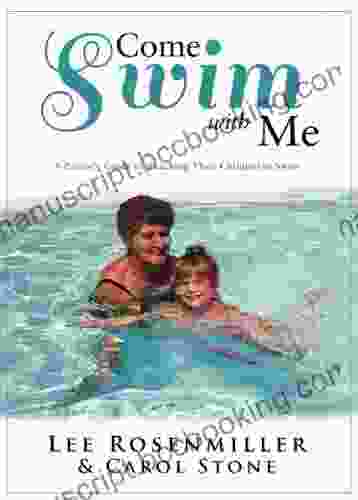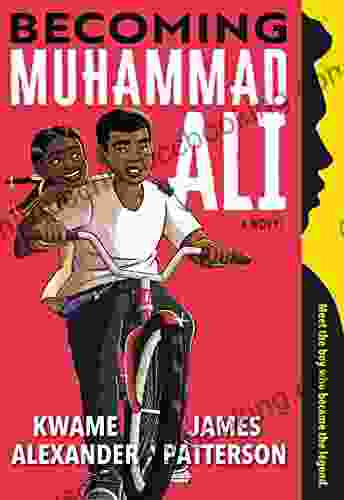The Ultimate Parent's Guide to Teaching Kids to Swim: A Comprehensive Resource for Safety and Success

Teaching your child to swim is one of the most important and rewarding things you can do for them. Swimming is a life-saving skill, and it can also help improve your child's physical and mental health. But teaching a child to swim can also be challenging, especially if you don't have any experience yourself.
That's where this guide comes in. This comprehensive resource will teach you everything you need to know about teaching your child to swim, from the basics of water safety to more advanced techniques. We'll cover everything from choosing the right swim lessons to helping your child overcome their fear of water.
4.4 out of 5
| Language | : | English |
| File size | : | 5953 KB |
| Text-to-Speech | : | Enabled |
| Screen Reader | : | Supported |
| Enhanced typesetting | : | Enabled |
| Word Wise | : | Enabled |
| Print length | : | 102 pages |
| Lending | : | Enabled |
Why is it important to teach my child to swim?
There are many reasons why teaching your child to swim is important. Here are just a few:
- Safety: Swimming is a life-saving skill. According to the Centers for Disease Control and Prevention (CDC),drowning is the second leading cause of death for children between the ages of 1 and 14. Teaching your child to swim can help reduce their risk of drowning.
- Physical health: Swimming is a great way to get exercise. It's a low-impact activity that can help improve your child's cardiovascular health, muscle strength, and flexibility.
- Mental health: Swimming can also help improve your child's mental health. It's a relaxing and enjoyable activity that can help reduce stress and anxiety.
- Social development: Swimming lessons can help your child develop social skills. They'll learn how to interact with other children and follow instructions.
What are the different types of swim lessons?
There are many different types of swim lessons available, so it's important to choose one that's right for your child. Here are a few of the most common types of swim lessons:
- Parent-child swim lessons: These lessons are designed for parents and children to take together. They're a great way to bond with your child and teach them basic water safety skills.
- Group swim lessons: These lessons are typically taught in a group setting, with a certified swim instructor. They're a good option for children who are comfortable in the water and want to learn more advanced swimming skills.
- Private swim lessons: These lessons are taught one-on-one with a certified swim instructor. They're a good option for children who need more individualized attention or who have a fear of water.
How do I choose the right swim lessons for my child?
When choosing swim lessons for your child, it's important to consider their age, experience level, and personality. You should also consider your own budget and schedule.
Here are a few tips for choosing the right swim lessons for your child:
- Start early: The sooner you start teaching your child to swim, the better. Most experts recommend starting swim lessons around the age of 4.
- Choose a certified instructor: Make sure the swim instructor you choose is certified by a reputable organization, such as the American Red Cross or the YMCA.
- Consider your child's personality: If your child is shy or anxious, you may want to choose private swim lessons. If your child is outgoing and loves to be around other children, group swim lessons may be a better option.
- Make it fun: Swimming should be fun for your child. If your child isn't having fun, they're less likely to want to learn.
How can I help my child overcome their fear of water?
Many children are afraid of water, especially young children. If your child is afraid of water, don't force them into the pool. Instead, take things slowly and gradually. Here are a few tips for helping your child overcome their fear of water:
- Start in shallow water: Let your child get used to the water by playing in shallow water, such as a baby pool or the edge of the pool.
- Use toys: Toys can make swimming more fun and help your child feel more comfortable in the water. Bring your child's favorite toys to the pool and let them play with them in the water.
- Be patient: It may take some time for your child to overcome their fear of water. Be patient and supportive, and don't give up.
What are the basics of water safety?
Before you start teaching your child to swim, it's important to teach them the basics of water safety. Here are a few of the most important water safety rules:
- Always swim with a buddy: Never swim alone, even if you're a good swimmer.
- Swim in designated areas: Only swim in areas that are designated for swimming, such as a pool or beach.
- Wear a life jacket: Children under the age of 12 should always wear a life jacket when they're in the water.
- Know your limits: Don't swim beyond your abilities. If you're not sure if you can swim in a certain area, don't do it.
- Be aware of the weather: Don't swim during a storm or when the water is choppy.
How can I teach my child to swim?
Once your child is comfortable in the water and understands the basics of water safety, you can start teaching them to swim. Here are a few tips for teaching your child to swim:
- Start with the basics: Start by teaching your child how to float, tread water, and blow bubbles.
- Use games: Games can make learning to swim more fun. Try playing games like "Marco Polo" or "Red Rover" in the pool.
- Be patient: Learning to swim takes time and practice. Be patient with your child and celebrate their progress, no matter how small.
What should I do if my child has an accident in the water?
If your child has an accident in the water, it's important to stay calm and act quickly. Here are a few steps to follow:
- Get your child out of the water: If your child is still in the water, get them out as quickly as possible.
- Call 911: If your child is not breathing or is unresponsive, call 911 immediately.
- Start CPR: If your child is not breathing, start CPR immediately. You can learn how to perform CPR by taking a CPR class.
- Stay with your child: Stay with your child until help arrives.
4.4 out of 5
| Language | : | English |
| File size | : | 5953 KB |
| Text-to-Speech | : | Enabled |
| Screen Reader | : | Supported |
| Enhanced typesetting | : | Enabled |
| Word Wise | : | Enabled |
| Print length | : | 102 pages |
| Lending | : | Enabled |
Do you want to contribute by writing guest posts on this blog?
Please contact us and send us a resume of previous articles that you have written.
 Book
Book Novel
Novel Page
Page Chapter
Chapter Text
Text Story
Story Genre
Genre Reader
Reader Library
Library Paperback
Paperback E-book
E-book Magazine
Magazine Newspaper
Newspaper Paragraph
Paragraph Sentence
Sentence Bookmark
Bookmark Shelf
Shelf Glossary
Glossary Bibliography
Bibliography Foreword
Foreword Preface
Preface Synopsis
Synopsis Annotation
Annotation Footnote
Footnote Manuscript
Manuscript Scroll
Scroll Codex
Codex Tome
Tome Bestseller
Bestseller Classics
Classics Library card
Library card Narrative
Narrative Biography
Biography Autobiography
Autobiography Memoir
Memoir Reference
Reference Encyclopedia
Encyclopedia Laura L Sullivan
Laura L Sullivan Evan Skolnick
Evan Skolnick Mark Schwartz
Mark Schwartz Tim Gunn
Tim Gunn Reyna Grande
Reyna Grande Patrick Meechan
Patrick Meechan Graham Mcneill
Graham Mcneill Tomu Ohmi
Tomu Ohmi Mia Reyes
Mia Reyes Fanny Kelly
Fanny Kelly Michelle Mijung Kim
Michelle Mijung Kim Holly Winter Huppert
Holly Winter Huppert Renee D Aoust
Renee D Aoust Ro Khanna
Ro Khanna Mary Jordan
Mary Jordan Kent Hoffman
Kent Hoffman Eugene M Makar
Eugene M Makar Jessica Bennett
Jessica Bennett Faythe Levine
Faythe Levine Evelyn M Wills
Evelyn M Wills
Light bulbAdvertise smarter! Our strategic ad space ensures maximum exposure. Reserve your spot today!

 Oliver FosterUnlock Your Potential: Discover the Secrets of Captivating Performances with...
Oliver FosterUnlock Your Potential: Discover the Secrets of Captivating Performances with... Chance FosterFollow ·14.9k
Chance FosterFollow ·14.9k Jaden CoxFollow ·16.1k
Jaden CoxFollow ·16.1k Bobby HowardFollow ·5.6k
Bobby HowardFollow ·5.6k George HayesFollow ·13.4k
George HayesFollow ·13.4k Chinua AchebeFollow ·14.4k
Chinua AchebeFollow ·14.4k Isaac AsimovFollow ·8.4k
Isaac AsimovFollow ·8.4k Neil ParkerFollow ·3.8k
Neil ParkerFollow ·3.8k Vernon BlairFollow ·7.7k
Vernon BlairFollow ·7.7k

 W.H. Auden
W.H. AudenStep into a World of Thrilling Deception: Don Blink by...
Unveiling the Masterpiece of Suspense:...

 Jaylen Mitchell
Jaylen MitchellUnleash Your Creativity with "This Easy Origami": A...
: Embark on an Enchanting Voyage into the...

 Vladimir Nabokov
Vladimir NabokovEmpowering Home Births: A Comprehensive Guide for Fathers...
An In-Depth Exploration of Paternal...

 Juan Rulfo
Juan RulfoThe Maya Exodus: Indigenous Struggle for Citizenship in...
The Maya Exodus: Indigenous Struggle for...

 Julio Ramón Ribeyro
Julio Ramón RibeyroKana Made Easy: Dive into Japanese the Fun and Effortless...
Unveiling the Secrets...
4.4 out of 5
| Language | : | English |
| File size | : | 5953 KB |
| Text-to-Speech | : | Enabled |
| Screen Reader | : | Supported |
| Enhanced typesetting | : | Enabled |
| Word Wise | : | Enabled |
| Print length | : | 102 pages |
| Lending | : | Enabled |












